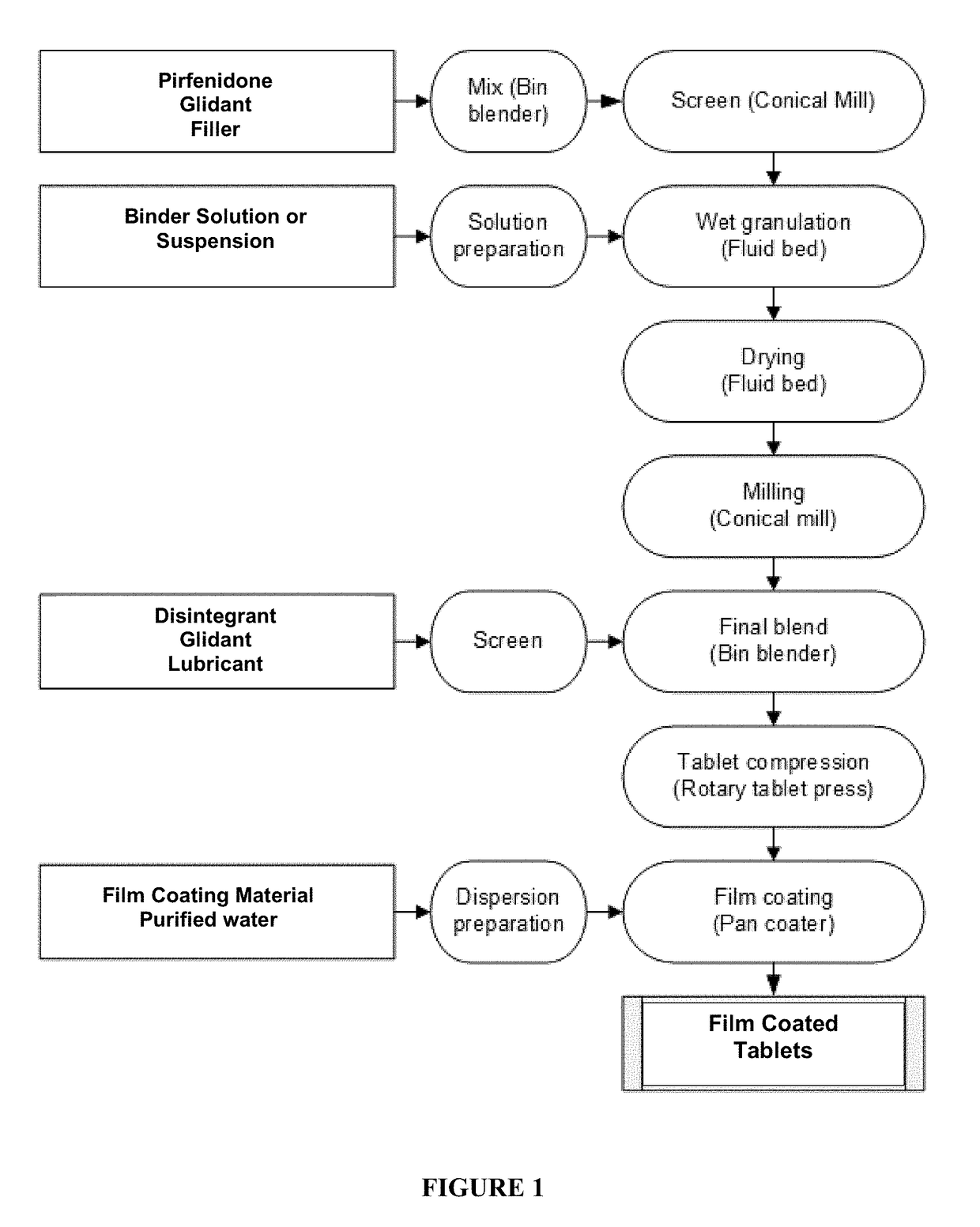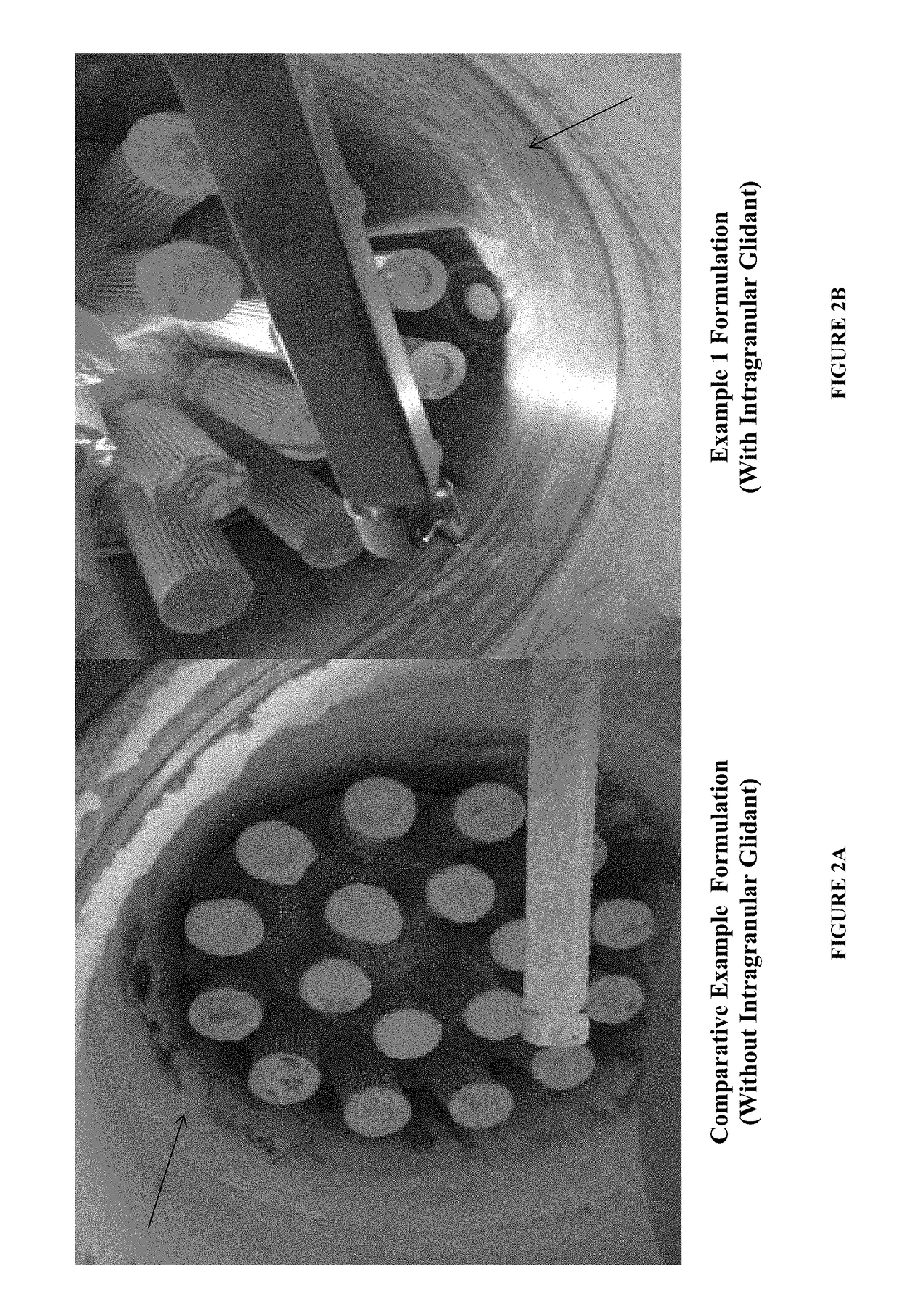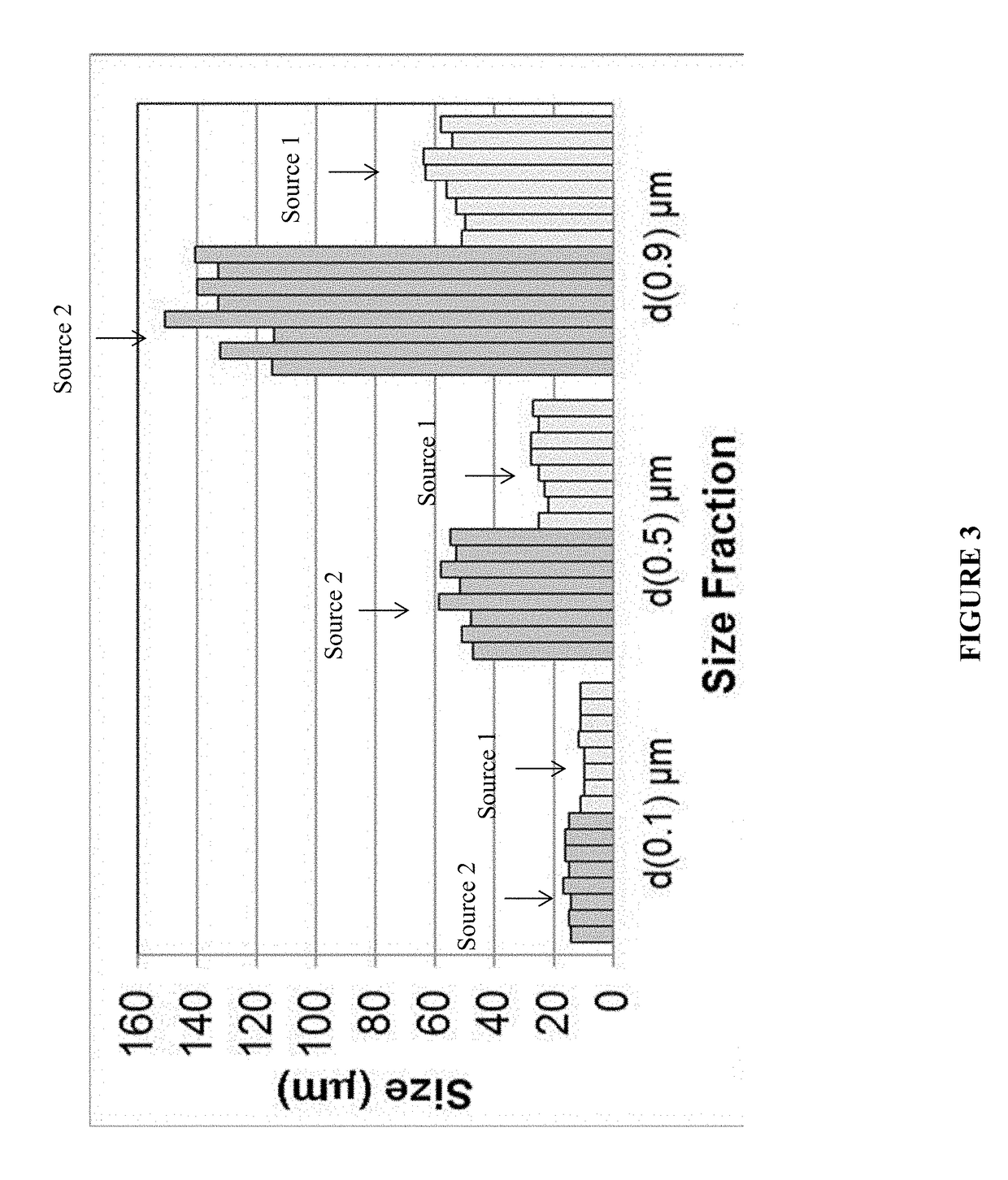Granulate Formulation of 5-methyl-1-phenyl-2-(1H)-pyridone and Method of Making the Same
- Summary
- Abstract
- Description
- Claims
- Application Information
AI Technical Summary
Benefits of technology
Problems solved by technology
Method used
Image
Examples
examples 1 and 2
Formulation
[0099]Tablet formulations having good manufacturability were produced having the following components:
TABLE 1Granulate FormulationExample 1Example 2AmountAmountComponentFunction(% w / w)(% w / w)INTRAGRANULAR COMPONENTSPirfenidoneActive84.23% 85.3%Microcrystalline Cellulose PH101Filler6.21% 6.2%SilicaGlidant2.05%2.08%Polyvinylpyrrolidone K30Binder4.64%3.83%EXTRAGRANULAR COMPONENTSCroscarmellose sodiumDisintegrant1.89%1.92%Mg StearateLubricant0.50%0.19%SilicaGlidant0.47%0.48%Total (tablet core) 100% 100%
example 3
Comparison to Formulation without Glidant
[0100]A comparison was made between a pirfenidone formulation with (the formulation of Example 1) and without (comparative example) intragranular glidant. The comparative formulation had the following components:
TABLE 2Comparative ExampleAmountComponentFunction(%w / w)INTRAGRANULAR COMPONENTSPirfenidoneActive87.11% Microcrystalline Cellulose PH101 Filler6.33%Silica (Aerosil ® 200)Glidant 0%Polyvinylpyrrolidone K30Binder3.92%EXTRAGRANULAR COMPONENTSCroscarmellose sodiumDisintegrant1.96%Mg StearateLubricant0.20%Silica (Aerosil ® 200)Glidant0.49%Total (tablet core) 100%
[0101]Both the formulation of Example 1 and the formulation of the comparative example (Table 2) were processed using fluid bed granulation. As illustrated in FIG. 2A, the comparative example resulted in residual powder remaining stuck to the side walls of the fluid bed granulator. Such sticking of the powder is indicative of the cohesive nature of the intragranular formulation and...
example 4
Flowability Analysis
[0102]Flow function coefficient (FFC) is a measure of powder flow. Values less than about 4 are considered poor and sub-optimal for powder processing. Values between 4-10 are considered acceptable flow values for powder processing. Flow behavior was analyzed for pure pirfenidone (without excipients) and a binary powder mixture of pirfenidone and microcrystalline cellulose mixed with either about 1% by weight silica or about 2% by weight silica, as shown in Table 3 below. The components were mixed in a turbula mixer and the different flow properties of the blends were measured.
TABLE 3Comparative Test Formulations with and without SilicaBinary Binary PureMixture with Mixture with API~1 wt. % silica~2 wt % silicaPirfenidone100%92.31% 91.40% Microcrystalline 6.70%6.64%cellulose PH101Silica0.99%1.96%Total100% 100% 100%
[0103]The testing confirmed that pure pirfenidone has poor flow behavior, having a FFC value of 2.3. Adding 1% silica improved the flow behavior slightl...
PUM
| Property | Measurement | Unit |
|---|---|---|
| Fraction | aaaaa | aaaaa |
| Fraction | aaaaa | aaaaa |
| Fraction | aaaaa | aaaaa |
Abstract
Description
Claims
Application Information
 Login to View More
Login to View More - R&D
- Intellectual Property
- Life Sciences
- Materials
- Tech Scout
- Unparalleled Data Quality
- Higher Quality Content
- 60% Fewer Hallucinations
Browse by: Latest US Patents, China's latest patents, Technical Efficacy Thesaurus, Application Domain, Technology Topic, Popular Technical Reports.
© 2025 PatSnap. All rights reserved.Legal|Privacy policy|Modern Slavery Act Transparency Statement|Sitemap|About US| Contact US: help@patsnap.com



